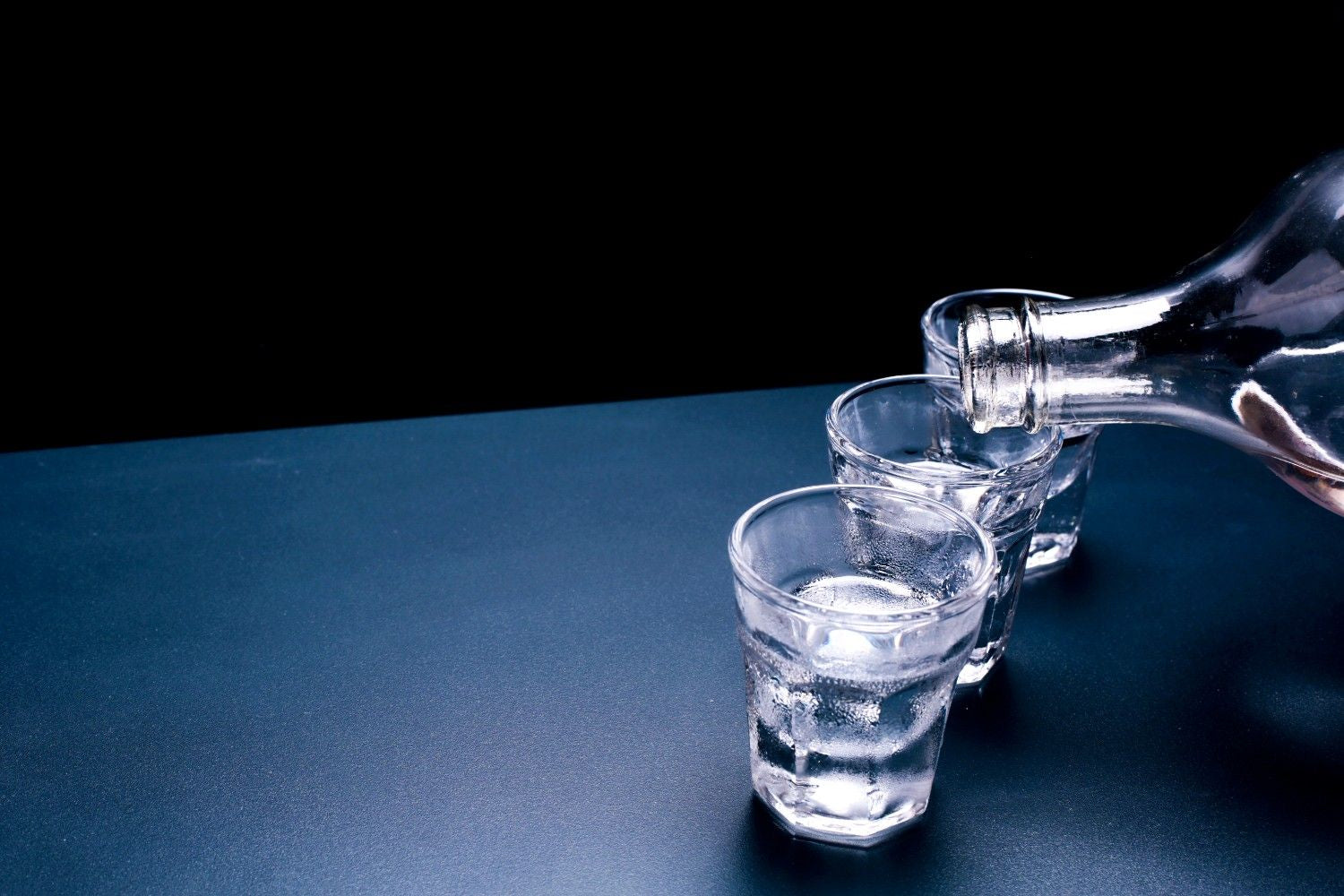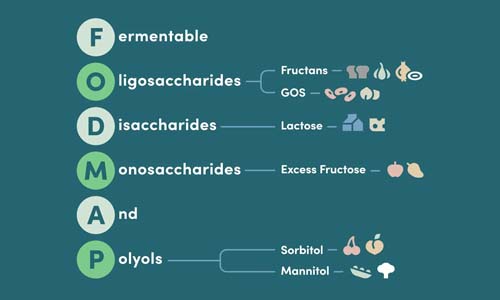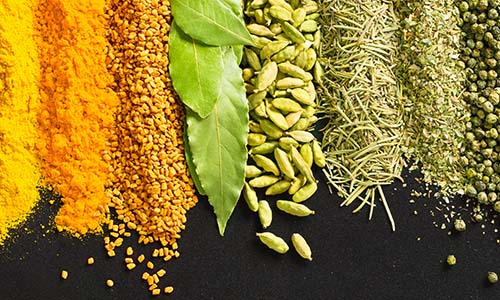Low FODMAP Alcohol: Your Complete Drinking Guide

Key Takeaways
- Pure spirits such as vodka and gin are naturally low FODMAP and safe for sensitive guts.
- Mixers and flavorings often contain high FODMAP ingredients that can trigger digestive issues.
- Choosing the right beers and wines is essential for maintaining gut comfort while enjoying alcohol.
- This guide explains the science behind low FODMAP alcohol and offers flavorful cocktail recipes.
- Enjoying alcohol on a low FODMAP diet is possible without sacrificing taste or social enjoyment.
Table of Contents
- What Is Low FODMAP Alcohol?
- Science of Alcohol, Digestion & IBS: What You Need to Know
- Low FODMAP Alcoholic Drinks by Category
- How to Choose Low FODMAP Alcohol, Smart Selection Strategies
- How to Choose Low FODMAP Alcohol, At Home, Bars, and Social Events
- Crafting Low FODMAP Cocktails: Tips, Recipes & Seasonings
Low FODMAP Alcohol – Flavors, Facts & Festive Freedom
Navigating low FODMAP alcohol doesn't mean sacrificing flavor or social connection. While pure spirits like vodka and gin are naturally FODMAP-free, the real challenge lies in mixers, flavorings, and understanding which beers and wines work with your gut. We'll decode the science, compare your options, and share cocktail recipes that deliver gourmet taste without digestive drama.
Most alcoholic beverages fall into predictable FODMAP categories, but hidden sugars and additives create unexpected triggers. The key is knowing which spirits, wines, and beers consistently test low, plus mastering simple mixology with gut-friendly ingredients like chive sprigs and fresh citrus. For more inspiration on delicious, gut-friendly meals to pair with your drinks, explore our low FODMAP recipes.
FODMAPs sneak into drinks through fruit juices (apple, pear), sweeteners (honey, agave), dairy additions, and residual sugars in dessert wines or flavored spirits. Certified testing by organizations like Monash University provides reliable serving-size guidelines, typically marking 12 oz beer or 5 oz wine as safe portions. If you're looking for a standout dish to serve at your next gathering, try our low FODMAP miso salmon recipe.
Quick Answer: Most pure spirits are low FODMAP, but watch mixers carefully. A vodka soda with lime is safe; a vodka cranberry with honey simple syrup isn't.
| Alcohol Type | FODMAP Status | Safe Serving Size | Watch Out For |
|---|---|---|---|
| Vodka, Gin, Whiskey | Low FODMAP | 1.5 oz (standard shot) | Flavored varieties |
| Dry Wine (Red/White) | Low FODMAP | 5 oz glass | Dessert wines, sweet varieties |
| Beer (Regular/GF) | Low FODMAP | 12 oz bottle | Wheat beers, fruit additions |
| Rum | High FODMAP | Limit severely | All varieties problematic |
Why Low FODMAP Choices Matter for Gut Health
Alcohol affects gut motility, intestinal permeability, and microbiome balance, amplifying IBS symptoms beyond FODMAP content alone. Even "safe" spirits can trigger symptoms through increased intestinal contractions or inflammatory responses, particularly on an empty stomach.
The timing matters significantly. FODMAP-related symptoms typically appear within 30 minutes to 4 hours, while alcohol's direct gut irritation can cause immediate discomfort. This dual mechanism explains why some people react strongly to any alcohol, regardless of FODMAP status.
Science of Alcohol, Digestion & IBS: What You Need to Know
Alcohol's Effect on the Digestive System
Research shows alcohol increases intestinal permeability within 30 minutes of consumption, potentially triggering inflammatory cascades in sensitive individuals. Studies indicate that consuming more than 2 standard drinks doubles the risk of GI upset, regardless of FODMAP content, due to alcohol's direct irritant properties on the intestinal lining. For a deeper dive into the science, see this research article on alcohol and gut health.
For people with IBS, alcohol disrupts the gut-brain axis communication, potentially intensifying pain signals and motility irregularities. The concentration matters, higher-proof spirits mixed with adequate dilution cause fewer immediate symptoms than concentrated shots.
Why Some Alcoholic Beverages Cause Bloat or Pain
Beyond FODMAP content, several mechanisms trigger digestive distress. Carbonation in beer and sparkling wine physically distends the stomach, while histamines in red wine cause inflammatory responses in sensitive individuals. Residual sugars from incomplete fermentation, particularly in craft beers and sweet wines, feed problematic gut bacteria.
The gut-brain stress axis amplifies these effects during social drinking, where anxiety about symptoms can actually worsen digestive responses, creating a cycle where anticipation of problems increases their likelihood.
Top Triggers to Avoid: Dessert wines, flavored spirits, wheat beers, anything mixed with apple juice, honey, or dairy-based liqueurs.
Low FODMAP Alcoholic Drinks by Category

Beer & Gluten-Free Beer
Most regular lagers and pilsners test low FODMAP at the standard 12 oz/375 ml serving. The fermentation process breaks down most FODMAPs, making traditional brews like Budweiser, Coors, and Corona generally safe choices. However, craft beers with added fruit, honey, or wheat can introduce FODMAPs back into the equation.
Gluten-free beers present an interesting case for our customers. While they eliminate gluten concerns, they're not automatically more FODMAP-friendly than regular beer. Many GF options use rice or corn as their base, which maintains the low FODMAP status. Best for: Those with both gluten sensitivity and IBS who want to enjoy beer without digestive distress.
Watch out for fruit-flavored varieties and anything labeled "wheat beer" or "hefeweizen", these typically contain higher FODMAP ingredients that can trigger symptoms even in small amounts.
Wine (Red, White, Sparkling, Sweet)
Dry wines across the spectrum, red, white, rosé, and sparkling, test consistently low FODMAP at a 5 oz/150 ml serving. The fermentation process converts most sugars, leaving behind alcohol and complex flavors without the digestive triggers. Pinot Grigio, Cabernet Sauvignon, and Prosecco all make excellent choices for low fodmap alcohol enthusiasts.
Sweet and dessert wines tell a different story. These retain high levels of fructose, making them problematic for FODMAP-sensitive individuals. Port, Moscato, and ice wines should be avoided or limited to tiny tastings. Best for: Wine lovers who want sophisticated flavors without the bloat, stick to anything labeled "dry" or "brut."
Some Gourmend customers report sensitivity to red wines specifically, often due to histamines rather than FODMAPs. If you experience headaches or flushing, the issue likely isn't FODMAP-related.
Distilled Spirits (Vodka, Gin, Tequila, Whiskey)
Pure distilled spirits represent the safest category for low fodmap alcohol choices. Vodka, gin, tequila, whiskey, and brandy undergo distillation that removes virtually all FODMAPs, regardless of their original source ingredients. A standard 1.5 oz shot contains no measurable FODMAPs.
The exception in this category is rum, which often retains higher fructose levels from its sugarcane base. While not universally high FODMAP, rum poses more risk than other clear spirits. Flavored vodkas and gins can also be problematic if they contain fruit extracts or artificial sweeteners.
Best for: Maximum flexibility in cocktail creation. These spirits pair beautifully with Gourmend-approved mixers like fresh chive sprigs, citrus, and our recommended seasonings for savory cocktail garnishes. For a delicious side dish to accompany your cocktails, try our low FODMAP crisp roasted baby potatoes.
| Beverage Type | FODMAP Status | Safe Serving Size | Watch Out For | Best Choices |
|---|---|---|---|---|
| Regular Beer | Low FODMAP | 12 oz (375ml) | Fruit additions, wheat varieties | Lagers, pilsners |
| Dry Wine | Low FODMAP | 5 oz (150ml) | Sweet/dessert wines | Pinot Grigio, Cabernet, Prosecco |
| Distilled Spirits | FODMAP-Free | 1.5 oz (45ml) | Flavored varieties, rum | Vodka, gin, tequila, whiskey |
| Hard Cider | High FODMAP | Avoid | Apple/pear base | None recommended |
| Hard Seltzers | Variable | 12 oz if unflavored | Artificial sweeteners, fruit flavors | Plain varieties only |
Seltzers, Hard Cider & Mixed Alcohols
Hard seltzers occupy a tricky middle ground in the fodmap alcohol landscape. Plain varieties made with simple alcohol and carbonated water typically test low FODMAP, but flavored versions often contain problematic ingredients. Artificial sweeteners like sorbitol and mannitol are common FODMAP culprits in these drinks.
Hard ciders deserve a clear warning: avoid them entirely. Made from apples or pears, both high FODMAP fruits, these beverages retain significant amounts of fructose and sorbitol even after fermentation. The 12 oz serving size makes them particularly problematic for sensitive digestive systems.
Alcoholic kombucha and other fermented beverages marketed as "healthy" often contain high FODMAP ingredients despite their wellness positioning. Best for: Those who prefer lighter alcohol content should stick to unflavored seltzers or create their own spritzers using safe spirits and club soda. For more information on what you can drink on a low FODMAP diet, visit this comprehensive guide from the Canadian Digestive Health Foundation.
How to Choose Low FODMAP Alcohol, Smart Selection Strategies
Reading Labels & Ingredient Lists Like a Pro
Master the art of spotting FODMAP triggers before they reach your glass. High-risk ingredients hide in plain sight: honey, agave nectar, high fructose corn syrup, apple juice concentrate, and lactose-based cream liqueurs. These sweeteners and additives transform otherwise safe spirits into digestive troublemakers.
Look for certification stamps from Monash University or similar testing organizations, though these remain rare on alcohol labels. More commonly, scan for simple ingredient lists, the shorter, the better. Vodka should list only ethanol and water. Flavored varieties that mention "natural apple flavor" or "pear essence" signal potential FODMAP content.
Quick identification trick: If you can't pronounce half the ingredients or see fruit names beyond citrus, choose something simpler. When in doubt, unflavored spirits mixed with fresh ingredients give you complete control over FODMAP content.
How to Choose Low FODMAP Alcohol, At Home, Bars, and Social Events
Planning Ahead for Dinner Parties, Restaurants & Happy Hours
Transform potentially stressful social drinking into confident enjoyment with advance preparation. Most restaurant websites post their cocktail menus online, scan these beforehand to identify safe options or potential modifications. Call ahead for special events to discuss mixer alternatives with bartenders.
Develop your "go-to" orders that work at virtually any establishment: vodka with club soda and lime, gin with tonic and fresh herbs, or whiskey neat with a water back. These combinations rely on universally available ingredients while maintaining sophistication.
Three Safe Orders at Any Bar:
- Vodka + club soda + muddled cucumber and fresh mint
- Gin + tonic water + lime wedge (specify fresh lime, not lime juice)
- Whiskey + one ice cube + side of sparkling water
For dinner parties, offer to bring mixers or garnishes that enhance everyone's drinks while ensuring your safety. Fresh chive sprigs, citrus wheels, and herb bundles elevate any cocktail while keeping you within low fodmap alcohol guidelines.
Serving Size & Tolerance, Finding Your Sweet Spot
Even perfectly FODMAP-safe alcohol can trigger symptoms when consumed too quickly or on an empty stomach. The "one drink per hour with food" guideline helps your digestive system process alcohol gradually while maintaining stable blood sugar levels.
Start with half-portions when testing new alcoholic beverages. A 2.5 oz wine serving or half-shot of spirits lets you gauge individual tolerance without committing to full portions. This approach proves especially valuable when trying new brands or varieties within safe categories.
Track your responses using a simple three-column log: drink type and amount, timing relative to meals, and any symptoms within 4 hours. Patterns emerge quickly, helping you identify personal triggers beyond standard FODMAP guidelines.
Crafting Low FODMAP Cocktails: Tips, Recipes & Seasonings

Rulebook for Low FODMAP Mixology
Successful low fodmap alcohol cocktails follow our three-ingredient maximum rule, focusing on high-impact flavors that deliver complexity without digestive chaos. Fresh chive sprigs provide onion-like depth, while green leek tops add subtle sweetness, both approved alternatives that create sophisticated flavor profiles.
Swap problematic sweeteners for maple syrup, limiting portions to 1 teaspoon per drink to maintain FODMAP safety. Fresh herbs like mint, basil, and rosemary contribute aromatic complexity without any FODMAP concerns. Citrus, lemon, lime, and orange, provides acidity and brightness while remaining universally safe.
Avoid dairy-based mixers, cream liqueurs, and most commercial bitters, which often contain high FODMAP ingredients. Instead, muddle fresh ingredients directly in your glass or shaker for clean, vibrant flavors that support rather than compromise digestion. For more ideas on how to elevate your low FODMAP meals, check out our low FODMAP French vinaigrette recipe.
Five Must-Try Low FODMAP Cocktails
Vodka Citrus Spritz (2 minutes): Combine 1.5 oz vodka, 1 oz fresh lemon juice, 4 oz club soda, and 2 fresh chive sprigs. Muddle chives gently, add ice, and garnish with lemon wheel.
Gin Basil Cooler (3 minutes): Muddle 6 fresh basil leaves with 1 oz lime juice, add 1.5 oz gin and 3 oz tonic water. Strain over ice, garnish with basil sprig.
Whiskey Maple Sour (3 minutes): Shake 1.5 oz whiskey, 1 oz lemon juice, and 1 tsp maple syrup with ice. Strain into rocks glass with fresh ice cube.
Cucumber Chive Smash (2 minutes): Muddle 3 cucumber slices and 2 chive sprigs, add 1.5 oz gin and 1 oz lime juice. Shake with ice, strain over fresh ice.
Festive Cranberry Sparkler (2 minutes): Mix 1.5 oz vodka with 2 oz pure cranberry juice (no added sugars), top with 2 oz sparkling water and fresh mint.
Frequently Asked Questions
Which types of alcoholic beverages are considered low FODMAP and safe for sensitive guts?
Pure spirits such as vodka, gin, and whiskey are naturally low FODMAP and generally safe in standard servings. Dry red and white wines and most gluten-free or regular beers in moderate amounts are also considered low FODMAP choices for sensitive digestion.
How do mixers and flavorings impact the FODMAP content of alcoholic drinks?
Mixers and flavorings often contain high FODMAP ingredients like honey, fruit juices (apple, pear), and sweeteners that can trigger digestive discomfort. Choosing simple mixers such as soda water, fresh citrus, or using chive sprigs helps keep cocktails low FODMAP and gut-friendly.
Why can alcohol trigger IBS symptoms even if the drink is low FODMAP?
Alcohol itself can affect gut motility and sensitivity, potentially leading to symptoms like bloating or discomfort regardless of FODMAP content. Additionally, additives and residual sugars in some drinks may contribute to digestive upset, so moderation and ingredient awareness are key.
What are some tips for choosing or crafting low FODMAP cocktails at home or in social settings?
Opt for pure spirits with simple, low FODMAP mixers like soda water and fresh lime or lemon. Avoid flavored spirits and mixers with high FODMAP ingredients. When out, ask about ingredients and stick to standard serving sizes to enjoy flavorful drinks without digestive drama.





